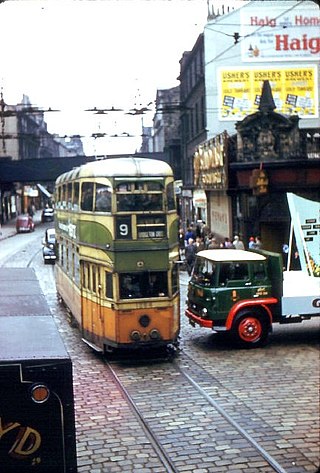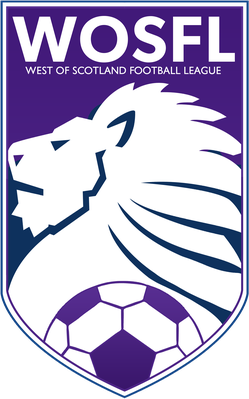Related Research Articles

Glasgow City Council is the local government authority for Glasgow City council area, Scotland. In its modern form it was created in 1996. Glasgow was formerly governed by a corporation, also known as the town council, from the granting of its first burgh charter in the 1170s until 1975. From 1975 until 1996 the city was governed by City of Glasgow District Council, a lower-tier authority within the Strathclyde region.

Lanarkshire, also called the County of Lanark, is a historic county, lieutenancy area and registration county in the Central Lowlands and Southern Uplands of Scotland. The county is no longer used for local government purposes, but gives its name to the two modern council areas of North Lanarkshire and South Lanarkshire.

Bridgeton is a district to the east of Glasgow city centre. Historically part of Lanarkshire, it is bounded by Glasgow Green to the west, Dalmarnock to the east and south, Calton to the north-west at Abercromby Street/London Road and Broad street to the north-east.
Cranhill is an inner city district and housing scheme in the north east of Glasgow, Scotland. Cranhill was developed from public funding in the early 1950s and was originally, chiefly composed of four-storey tenement blocks surrounding a patch of grassland, which became Cranhill Park. Later development saw the building of three tower blocks, surrounded by rows of terraced maisonettes. In more recent years, a number of semi-detached and detached homes have been built. The area also hosts some shops, two primary schools and nurseries, a community centre and the Cranhill water tower.

Drumchapel, known locally as 'The Drum', is a district in the north-west of the city of Glasgow, Scotland. It borders Bearsden to the north-east and Drumry to the south-west, as well as Blairdardie, Garscadden, Knightswood and Yoker in Glasgow to the south; land to the north is undeveloped and includes the course of the Roman-era Antonine Wall. The name derives from the Gaelic meaning 'the ridge of the horse'.
The city of Glasgow, Scotland, has many amenities for a wide range of cultural activities, from curling to opera and from football to art appreciation; it also has a large selection of museums that include those devoted to transport, religion, and modern art. In 2009 Glasgow was awarded the title UNESCO Creative City of Music in recognition of its vibrant live music scene and its distinguished heritage. Glasgow has three major universities, each involved in creative and literary arts, and the city has the largest public reference library in Europe in the form of the Mitchell Library. Scotland's largest newspapers and national television and radio companies are based in the city.
The Bruce Report is the name commonly given to the First Planning Report to the Highways and Planning Committee of the Corporation of the City of Glasgow published in March 1945. It influenced an intensive programme of regeneration and rebuilding efforts which took place in the city and surroundings from the mid-1950s and lasted until the late 1970s. The author was Robert Bruce, Glasgow Corporation Engineer at the time.

Elections to Glasgow City Council were held on 3 May 2007, the same day as the other Scottish local government elections and the Scottish Parliament general election. The election was the first one using 21 new wards created as a result of the Local Governance (Scotland) Act 2004, each ward elected three or four councillors using the single transferable vote system form of proportional representation. The new wards replaced 79 single-member wards which used the plurality system of election. It also saw the election of Glasgow's first councillors for the Scottish Greens and for Solidarity.

The Archdiocese of Glasgow is the Latin Catholic metropolitan see of the Province of Glasgow in central Scotland. The episcopal seat of the developing diocese was established by Saint Kentigern in the 6th century AD. It is one of two catholic metropolitan archdioceses of the Catholic Church in Scotland: the only archdioceses in Scotland. It is the elder of the two bishoprics. Innocent VIII first raised Glasgow a metropolitan archbishopric in 1492. The Metropolis has the dioceses of Motherwell and Paisley as suffragans within the Ecclesiastical Province.

Glasgow Corporation Tramways were formerly one of the largest urban tramway systems in Europe. Over 1000 municipally-owned trams served the city of Glasgow, Scotland, with over 100 route miles by 1922. The system closed in 1962 and was the last city tramway in Great Britain.

Glasgow, the largest city in Scotland, has several distinct styles of residential buildings. Building styles reflect historical trends, such as rapid population growth in the 18th and 19th centuries, deindustrialisation and growing poverty in the late 20th century, and civic rebound in the 21st century.

The Glasgow razor gangs were violent gangs that existed in the East End and South Side of Glasgow, Scotland in the late 1920s and 1930s and were named after their weapon of choice. H. Kingsley Long's novel No Mean City (1935) contains a fictionalised account of these gangs.

The Glasgow City Council election of 2017 was held on 4 May 2017, the same day as the 31 other Scottish local government elections. The election was the first to use 23 new wards, created as a result of the Local Government Boundary Commission for Scotland's 5th Review. Each ward elected three or four councillors using the single transferable vote system, a form of proportional representation used since the 2007 election and according to the Local Governance (Scotland) Act 2004.

The West of Scotland Football League (WoSFL) is a senior football league based in the west of Scotland. The league sits at levels 6–10 on the Scottish football league system, acting as a feeder to the Lowland Football League.
The 2021–22 West of Scotland Football League was the 2nd season of the West of Scotland Football League, with its top division as part of the sixth tier of the Scottish football pyramid system. The season began on 17 July 2021.
References
- ↑ Special Investigation into Glasgow Gangs | Evening Times 06.02.06 [ dead link ]
- ↑ "Glasgow Gang Map of 2006 | Evening Times 06.02.06". Archived from the original on 6 March 2021. Retrieved 1 November 2009.
- ↑ The list does not include two gangs from Drumchapel: Young Kendoon Boys (Kendoon Avenue), Young Drummy Derry (Drumry Road East). These days, a gang from Drumchapel area is usually called the "Drum Boys" - members come from different parts of the district. See: Graham Mann, 'Murder victim's brother vows to get revenge...', The Scottish Sun, 27 May 2023.
- ↑ "Clashes Between Rival Gangs Decreasing (Daily Record 2016)".
- ↑ "Police swoop to arrest thugs as young as 13 after brutal gang battle". Daily Record / Rutherglen Reformer. 16 May 2012. Retrieved 8 November 2016.
- ↑ Easterhouse Gangs - Reporting Scotland, BBC Scotland, 11 November 2013, archived from the original on 20 December 2021, retrieved 19 October 2018